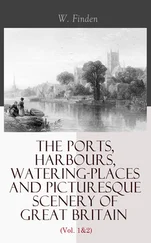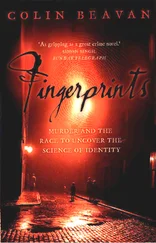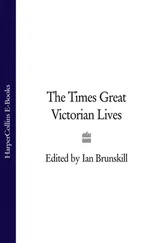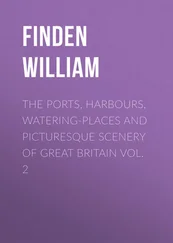In early August Sir George Cornewall Lewis, the Home Secretary, received two letters identifying Elizabeth Gough and a lover as the murderers. One was from a Guildford barrister, who wrote patronisingly of Whicher's efforts: 'A policeman may be a good hand at discovering a criminal: but it requires intellect and a mind enlarged by observation to detect a crime and unravel a mystery.' The other letter was from Sir John Eardley Wilmot of Bath, a baronet and former barrister, who took such a passionate interest in the case that he persuaded Samuel Kent to let him visit Road Hill House and interview a few of the inmates. Horatio Waddington, the formidable Permanent Under-Secretary of State at the Home Office, forwarded the letters to Mayne. 'This is now the favourite theory,' Waddington wrote on one of the envelopes, in a spiky hand. 'I should like to hear Inspector Whicher's remarks upon these two letters, surely if the girl had a lover, somebody must have known or at least suspected it.' Once Whicher had complied, with a report outlining his counter-arguments ('I fear that Sir John has not gone sufficiently into the facts . . .'), Waddington agreed: 'I rather incline to the opinion of the police man.'
When Eardley Wilmot sent another letter, this time suggesting that Gough had a soldier boyfriend, Waddington wrote on the envelope: 'I never heard of this soldier before. I don't know where he picked him up.' The Permanent Under-Secretary scratched his comments on the ensuing stream of letters from the baronet: 'A strange infatuation as it seems to me'; 'This Gentleman has a monomania on the subject'; and 'Does he wish to be employed as a Detective, or what?'
The letter-writers suggested a few other suspects. George Larkin of Wapping confided:
Sir, For three successive weeks I have had the Frome Murder in my Mind every time I wake and cannot get rid of the thought of it. That Mr Kent is the Murderer has appeared to me in the following manner and that his offering a
reward
is all a delusion (Bosh) my impression is that Mr Kent has gone to the
Nurse Maids Room
for
some Purpose,
that the child has woke and recognised its Father that the Father through Fear of an Exposure in the Family strangled it in the Room after the Nurse Maid had gone to sleep that he there carried it to the Closet and cut the Throat.
A resident of Blandford, Dorset, wrote, ' I firmly believe that Mrs Kent killed the child at Road,' while Sarah Cunningham of west London claimed that 'step by step I can trace the murderer in the brother of William Nutt and the son-in-law of Mrs Holly the Laundress'.
Lieutenant-Colonel Maugham wrote from Hanover Square, London,
With grace allow me to suggest . . . that inquiries be made as to whether chloroform was kept in the house where the child was murdered . . . if not, whether any had been purchased in the neighbourhood, or at the towns, or villages, where the children of Mr Kent's family had been at school . . . I would further suggest whether any weapon was taken from or purchased in
the neighbourhood of the schools.
In a note to Mayne, Whicher observed that Joshua Parsons had not detected any trace of chloroform in Saville's body. 'As regards the suggestion that a weapon might have been purchased in the Neighbourhood or brought from School by Miss Kent, inquiry has been made on that point already.'
On most of the letters from the public Whicher scrawled 'There is nothing in this to assist the enquiry'; occasionally he expanded, impatiently, 'all the points having been duly considered previously by me', or 'I saw all the persons alluded to while I was on the spot and am satisfied they are not connected with the murder.'
The only letter to offer information, rather than speculation, was from William Gee, of Bath: 'As to Mr Kent himself I learn from the widow of a schoolmaster a friend of mine that 4 years ago he was so straitened as not to be able to pay the Bills of the Son PS15 or PS20 half-yearly. I cannot reconcile his occupying so handsome a mansion (second to few in the neighborhood) with the way in which he [illegible] a poor Teacher.' Samuel's failure to pay his son's school bills suggested he was as cash-strapped as Joseph Stapleton implied; it also indicated a carelessness about William's welfare.
The letters to Scotland Yard were the fruit of a new English obsession with detection. The public was fascinated by murder, especially when it was domestic and mysterious, and was becoming engrossed by the investigation of murder, too. 'I like a good murder that can't be found out,' says Mrs Hopkinson in Emily Eden's novel The Semi-Detached House (1859). 'That is, of course, it is very shocking, but I like to hear about it.' The Road Hill case took the national enthusiasm for baffling crimes to a new level. In The Moonstone, Wilkie Collins dubbed this mania 'a detective-fever'.
While the press and the public condemned Whicher's prurient, impertinent speculations, they freely made their own. The first detective in English literature, like them, was an armchair detective: Poe's Auguste Dupin solved crimes not by searching for clues at the scene but by picking them out of newspaper reports. The time of the professional police detective had barely begun; the era of the amateur was already in full flower.
In an anonymous penny pamphlet printed in Manchester - the sixteen-page Who Committed the Road Murder? Or, The Track of Blood Followed - 'a Disciple of Edgar Allan Poe' poured scorn on Whicher's investigation. 'Hitherto the brilliant "Detective's" effort has been to associate that nightdress with Miss Constance Kent; to prove that her guilt is wrapped up in it! and to find out where it is. All wrong! I perceive her purity in its loss; and, in its loss, another's guilt. The thief purloined that dress to shield herself, by casting suspicion on one of her own sex. ' The pamphleteer had already absorbed one tenet of detective fiction: the solution must always be labyrinthine, indirect, paradoxical. The lost nightdress must mean just the opposite of what it seemed to mean: 'I perceive her purity in its loss'.
The author wondered if the village had been searched thoroughly for bloodstained clothing, if the Road Hill House chimneys had been examined for scraps of burnt evidence, if the records of local knife-sellers had been checked. He or she used an unsettling piece of imaginative reconstruction to argue that, since Saville's throat was cut from left to right, the murderer must be left-handed: 'Draw an imaginary line on the body of a chubby child . . . An ordinary person, committing such a crime, would (in an ordinary way) place his left hand on the child's breast and cut towards him with his right hand.'
The newspapers too made their conjectures. The Globe blamed William Nutt, the Frome Times pointed at Elizabeth Gough, the Bath Express hinted at William Kent's guilt. The Bath Chronicle - in an article that provoked a libel suit - fixed on Samuel:
If the hypothesis that a girl had an illicit intrigue, and that the other party to that intrigue preferred murder to exposure, be well founded, we must unhappily endeavour to find some one to whom such exposure would have been ruin, or at all events would have produced a state of things so terrible to himself that in a moment of wild terror he seized the most dreadful means of avoiding it. Who is there to whom such terms would at all apply? . . . at that strange, pale hour of morning when we have all the power of thought, almost painfully vivid, but are without the same will and wise resolution which come when we arise and buckle ourselves to the duties of the day . . . A weak, bad, terrified, violent man sees a child between him and ruin - and the fearful deed is madly done.
Читать дальше












